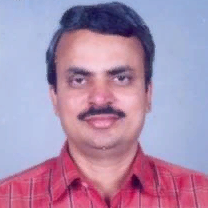
P V Rao
Work place: Centre for Airborne Systems, Defence Research and Development Organization (DRDO), Belur, Yemlur Post, Bangalore, India-560037.
E-mail:
Website:
Research Interests: Computational Engineering, Engineering
Biography
P V Rao received his MSc (Engg) on adaptive arrays in 1993 and PhD in computational
electromagnetics in 2002 from Indian Institute of Science, Bangalore. Since 2005 he is working as a Scientist with Centre for Airborne Systems, DRDO. His areas of interest include Antenna, Antenna Arrays, Adaptive Arrays, Phased Array, Active Antenna Array, Computational Electromagnetic, RCS analysis and Mounted Antenna Analysis. He is a recipient of Laboratory scientist of the year award in 2012 and IETE M N Saha best paper award in 2013.
Author Articles
Integrated Guard Channel Synthesis in AESA based Airborne Surveillance Radar
By R Rajesh P V Rao Suma Varughese
DOI: https://doi.org/10.5815/ijwmt.2016.06.01, Pub. Date: 8 Nov. 2016
The guard channel is very effective in eliminating side-lobe returns, both targets and discrete clutter, in airborne radar's. The ideal design criterion for the guard channel is that all the side lobes of the main antenna are covered by the guard pattern. In this paper a novel design approach of generating the guard using the elements of the main Active Electronically Scanned Array (AESA) antenna, thereby eliminating the need for a separate antenna, is presented. The ground clutter has an angle dependent Doppler and clutter discrete that leak in through the side lobes, especially the inter-cardinal elevation side lobes looking at the near range, needs to be eliminated. Towards this the design of the weighting coefficients for the guard to cover all the side lobes of the main array is discussed. Furthermore a digital threshold scheme is proposed to improve the effectiveness of guard channel in eliminating side-lobe returns. The detection loss and blanking probability are characterized for the design. The measurement results confirm that the design objectives are met.
[...] Read more.Other Articles
Subscribe to receive issue release notifications and newsletters from MECS Press journals